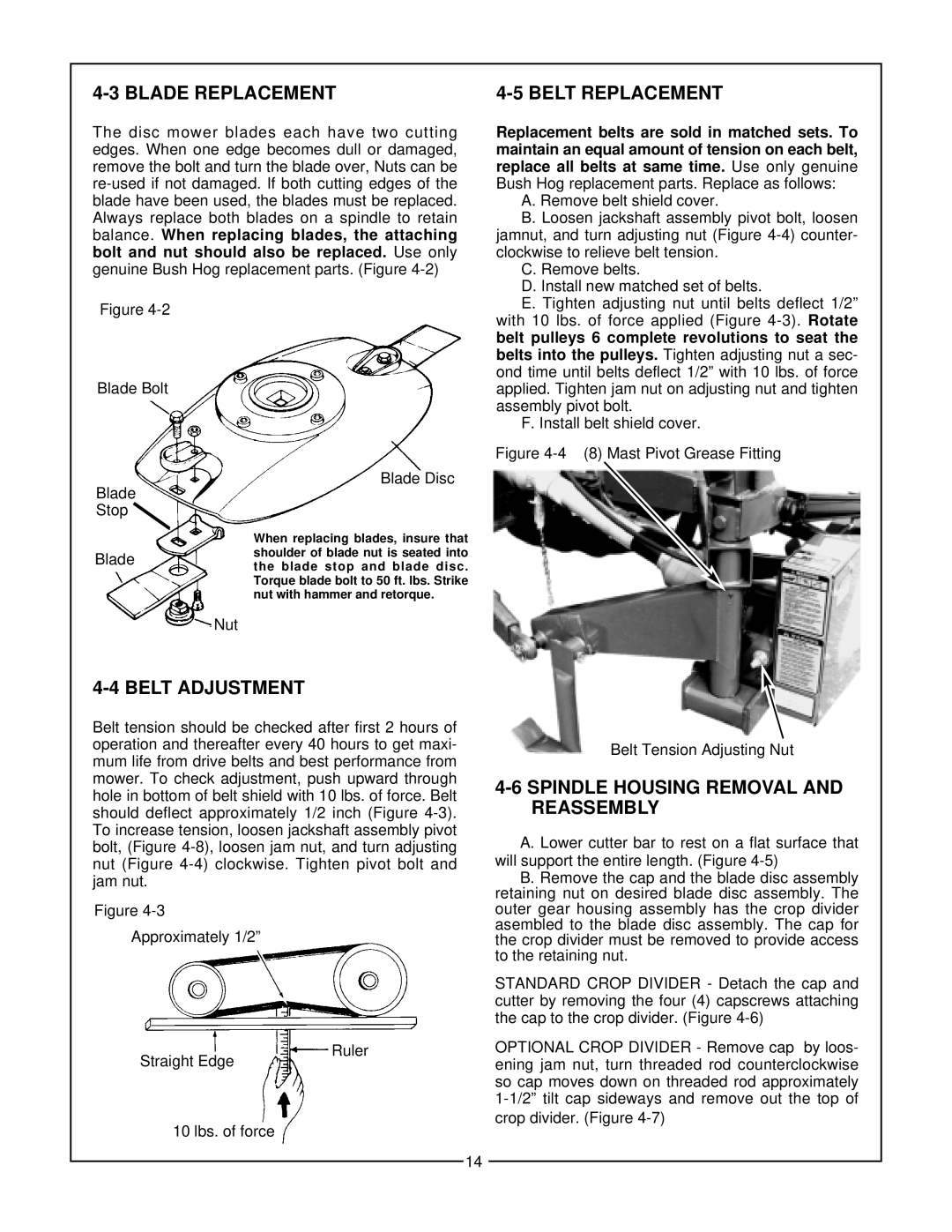GHM 1800, GHM 800, GHM 1900, GHM 700, GHM 900 specifications
Bush Hog is a renowned name in the agricultural industry, recognized for its commitment to quality and performance in land management equipment. The Bush Hog GHM series includes several models, including the GHM 900, GHM 700, GHM 1900, GHM 800, and GHM 1800, widely respected for their robust design and innovative technologies.The GHM 900 is a standout model known for its versatility and power. Designed for heavy-duty cutting tasks, it features a high-strength steel frame that provides exceptional durability. Its cutting width is 90 inches, making it ideal for tackling larger fields and pasture areas efficiently. The innovative floating hitch system allows for smooth contour following, ensuring maximum effectiveness over varied terrain.
The GHM 700, with a cutting width of 72 inches, is a reliable choice for smaller farms. This model is equipped with a maintenance-free gearbox that minimizes downtime and enhances productivity. Its compact design makes it easy to maneuver in tight spaces while still delivering a powerful performance for medium-weight jobs.
The GHM 1900 is geared towards large-scale operations, boasting a cutting width of 100 inches. This model excels in cutting dense vegetation and overgrowth, making it perfect for extensive land management projects. The heavy-duty construction means it can withstand rigorous use, and its adjustable skid shoes facilitate precise cutting heights.
The GHM 800 combines power and efficiency with an 84-inch cutting width. Its reinforced deck design provides strong performance even in the toughest conditions. The GHM 800 is equipped with advanced blade technology, which enhances cutting efficiency while reducing the overall power needed to operate, leading to fuel savings.
Lastly, the GHM 1800 is distinguished by its 96-inch cutting width, ideal for large mowing jobs. This model showcases advanced features, including improved blade overlap and a high-visibility safety design that keeps operators aware of their surroundings. Its heavy-duty, reinforced construction ensures it can handle tough environments, while the adjustable cutting height feature offers versatility for a variety of cutting applications.
In summary, the Bush Hog GHM series stands out for its commitment to quality, innovative design, and capability to handle challenging jobs. Each model is tailored to meet specific needs, ensuring efficiency and effectiveness in land management tasks. Whether for small farms or large-scale operations, the GHM series continues to be a trusted choice for agricultural professionals.

